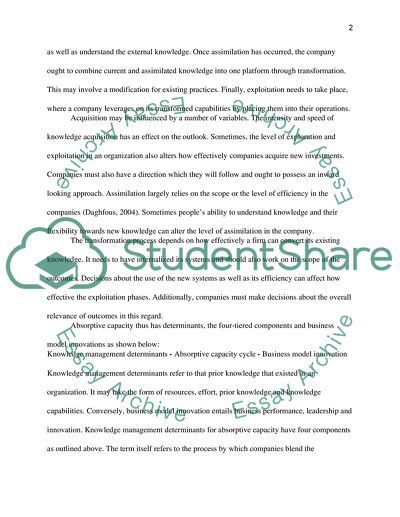Cite this document
(“Absorptive Capacity in Knowledge Management Essay”, n.d.)
Absorptive Capacity in Knowledge Management Essay. Retrieved from https://studentshare.org/education/1641377-leading-knowledge-management-for-organisational-learning
Absorptive Capacity in Knowledge Management Essay. Retrieved from https://studentshare.org/education/1641377-leading-knowledge-management-for-organisational-learning
(Absorptive Capacity in Knowledge Management Essay)
Absorptive Capacity in Knowledge Management Essay. https://studentshare.org/education/1641377-leading-knowledge-management-for-organisational-learning.
Absorptive Capacity in Knowledge Management Essay. https://studentshare.org/education/1641377-leading-knowledge-management-for-organisational-learning.
“Absorptive Capacity in Knowledge Management Essay”, n.d. https://studentshare.org/education/1641377-leading-knowledge-management-for-organisational-learning.


